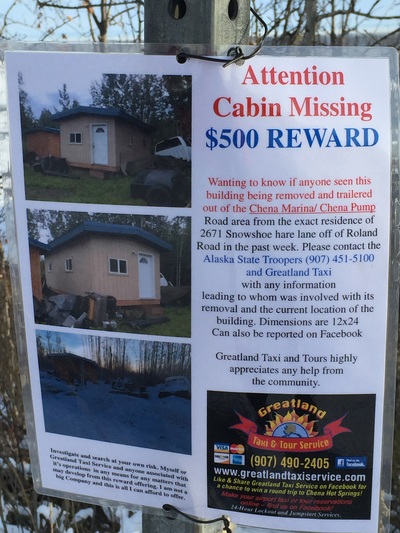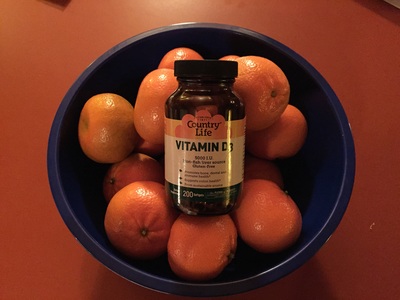"Love Letter to Fairbanks", by Alli Harvey
Alaska Dispatch News, 11/18/15
I showed my ID while paying for something at a bike shop in the Lower 48 recently, and the fellow behind the counter sniffed, “Ah, Anchorage. I lived in Alaska for years.” He meant Fairbanks.
Likewise, many people I know in Anchorage pity their cousin city to the north. They shake their heads and wonder how anyone could live in frigid, dark and weird Fairbanks. News from the Golden Heart City in recent years has included heating oil thefts straight from homes and temperatures that were too cold for ice carving. In the winter there can be thick ice fog and terrible air quality. In the summer, wildfires often produce more terrible air.
When I first visited, I was a wide-eyed teenager with a backpack, relying on an almost suspiciously cheap shuttle service since I was too young to rent a car. It was summertime and the driver wanted to tell me all about Fairbanks. He told me stories about what it’s like in the winter -- tunnels throughout the university; temperatures that hit minus 50 degrees Fahrenheit, causing spit to freeze before it hits the ground.
Being from the East Coast, I couldn’t conceive of such temperatures. I made an offhand comment about snowball fights.
The driver laughed. “If you even managed to make a snowball, it would disappear -- poof -- before it even left your hand.”
I immediately knew I’d come back to experience winter. That kind of winter was alien; I needed to see and feel it myself.
A lot to love
Fairbanks as a city is strange. There is a downtown, but that’s not the city’s anchor. For someone used to having a point of reference for navigation (i.e., the mountains to the east of Anchorage), driving can be disorienting since much of the town is flat.
Still, there is a lot to love in strangeness. I’ve met incredible people in Fairbanks, who are part of a strong interconnected community. If extreme conditions force people to bind, Fairbanks has them in droves. Thriving communities of curlers, square dancers and gardeners live there.
And some of the most unpretentiously rugged and adventurous Alaskans live in Fairbanks. You have to dig to learn about their accomplishments. These things are not shared with the first handshake, on a social media post or over a meal. But hang out long enough and you’ll find the ultra-runners, the year-round bike commuters, the skiers.
Frankly, even without showy accolades, I have a wide-eyed respect for people who not only survive but thrive in conditions that others compare to living on the moon.
Straight out of Dr. Seuss
I’ve now visited the moon, or Fairbanks in the winter, a number of times since that first summer trip north. I think it’s starkly beautiful.
Instead of the jagged and looming mountains that adorn Anchorage, there are rolling hills and domes. Sometimes the landscape looks straight out of a Dr. Seuss book -- Lorax trees swaying low and cartoon-like in the boreal forest. The hills feel like they go on forever.
The city in the winter is often a real-life snow globe. All surfaces, from power lines to fences, from roads to the miles of rolling hills, are frosted and white. Even at a stoplight or street corner, the landscape looks straight out of a Christmas card. This is not the grimy, splashing, dirt-colored slush snow that often lingers about an hour after it falls in warmer places. This is the pure-white stuff, from highways to every tree branch.
The cold is bitter but dry and it pinches your nose, not just outside but inside. It bites at your legs. Ice fog is thick and gray, and then it parts, revealing low sun and blue skies that blink in and out as the fog rolls around. The average high in January, according to U.S. Climate Data, is 1 degree.
Am I insane to love this? Maybe. I guess I’m supposed to drool over beach pictures this time of year. But as winter has become more and more elusive in Anchorage, it feels so good to experience a real one. In case I ever wonder exactly how far north I am, Fairbanks is a visceral reminder. It makes me think about what it really means to live in Alaska. It makes me think about the luxury I have to decide when I am inside or when I am outside, and the tenuous walls separating the two.
Asthma an issue
Would I be able to survive without that choice? Right now, given what I know and what I have, I doubt it. I think that’s important to remember. It forces me to think about what I’d need to be more self reliant. That includes skills and materials -- but also community.
Personally, my community, and my Alaska, is in Anchorage. Even if I were ever to consider moving to Fairbanks, I probably couldn’t -- I have asthma that is easily triggered, and the air quality would be a real problem. That said, I love Fairbanks. Even if I only get to visit occasionally, and even though in the winter I only get to step outside in bits and pieces. Still, I feel part of it.
I realize that this doesn’t continue the longstanding tradition of throwing barbs back toward the city to the north. As an Anchorage resident having written this love letter, I should probably turn myself in as a non-smack-talking traitor. But, for some future column egging on another inter-Alaska rivalry, there’s always Juneau.
Alli Harvey lives, works and plays in Anchorage.
Likewise, many people I know in Anchorage pity their cousin city to the north. They shake their heads and wonder how anyone could live in frigid, dark and weird Fairbanks. News from the Golden Heart City in recent years has included heating oil thefts straight from homes and temperatures that were too cold for ice carving. In the winter there can be thick ice fog and terrible air quality. In the summer, wildfires often produce more terrible air.
When I first visited, I was a wide-eyed teenager with a backpack, relying on an almost suspiciously cheap shuttle service since I was too young to rent a car. It was summertime and the driver wanted to tell me all about Fairbanks. He told me stories about what it’s like in the winter -- tunnels throughout the university; temperatures that hit minus 50 degrees Fahrenheit, causing spit to freeze before it hits the ground.
Being from the East Coast, I couldn’t conceive of such temperatures. I made an offhand comment about snowball fights.
The driver laughed. “If you even managed to make a snowball, it would disappear -- poof -- before it even left your hand.”
I immediately knew I’d come back to experience winter. That kind of winter was alien; I needed to see and feel it myself.
A lot to love
Fairbanks as a city is strange. There is a downtown, but that’s not the city’s anchor. For someone used to having a point of reference for navigation (i.e., the mountains to the east of Anchorage), driving can be disorienting since much of the town is flat.
Still, there is a lot to love in strangeness. I’ve met incredible people in Fairbanks, who are part of a strong interconnected community. If extreme conditions force people to bind, Fairbanks has them in droves. Thriving communities of curlers, square dancers and gardeners live there.
And some of the most unpretentiously rugged and adventurous Alaskans live in Fairbanks. You have to dig to learn about their accomplishments. These things are not shared with the first handshake, on a social media post or over a meal. But hang out long enough and you’ll find the ultra-runners, the year-round bike commuters, the skiers.
Frankly, even without showy accolades, I have a wide-eyed respect for people who not only survive but thrive in conditions that others compare to living on the moon.
Straight out of Dr. Seuss
I’ve now visited the moon, or Fairbanks in the winter, a number of times since that first summer trip north. I think it’s starkly beautiful.
Instead of the jagged and looming mountains that adorn Anchorage, there are rolling hills and domes. Sometimes the landscape looks straight out of a Dr. Seuss book -- Lorax trees swaying low and cartoon-like in the boreal forest. The hills feel like they go on forever.
The city in the winter is often a real-life snow globe. All surfaces, from power lines to fences, from roads to the miles of rolling hills, are frosted and white. Even at a stoplight or street corner, the landscape looks straight out of a Christmas card. This is not the grimy, splashing, dirt-colored slush snow that often lingers about an hour after it falls in warmer places. This is the pure-white stuff, from highways to every tree branch.
The cold is bitter but dry and it pinches your nose, not just outside but inside. It bites at your legs. Ice fog is thick and gray, and then it parts, revealing low sun and blue skies that blink in and out as the fog rolls around. The average high in January, according to U.S. Climate Data, is 1 degree.
Am I insane to love this? Maybe. I guess I’m supposed to drool over beach pictures this time of year. But as winter has become more and more elusive in Anchorage, it feels so good to experience a real one. In case I ever wonder exactly how far north I am, Fairbanks is a visceral reminder. It makes me think about what it really means to live in Alaska. It makes me think about the luxury I have to decide when I am inside or when I am outside, and the tenuous walls separating the two.
Asthma an issue
Would I be able to survive without that choice? Right now, given what I know and what I have, I doubt it. I think that’s important to remember. It forces me to think about what I’d need to be more self reliant. That includes skills and materials -- but also community.
Personally, my community, and my Alaska, is in Anchorage. Even if I were ever to consider moving to Fairbanks, I probably couldn’t -- I have asthma that is easily triggered, and the air quality would be a real problem. That said, I love Fairbanks. Even if I only get to visit occasionally, and even though in the winter I only get to step outside in bits and pieces. Still, I feel part of it.
I realize that this doesn’t continue the longstanding tradition of throwing barbs back toward the city to the north. As an Anchorage resident having written this love letter, I should probably turn myself in as a non-smack-talking traitor. But, for some future column egging on another inter-Alaska rivalry, there’s always Juneau.
Alli Harvey lives, works and plays in Anchorage.






 RSS Feed
RSS Feed
